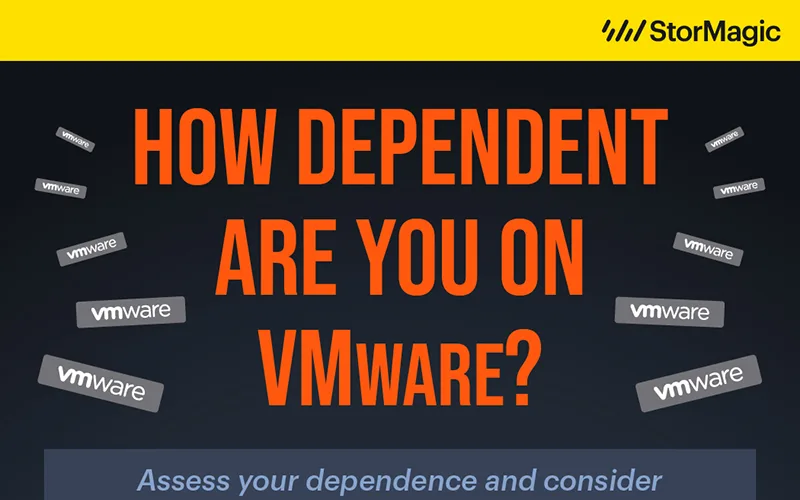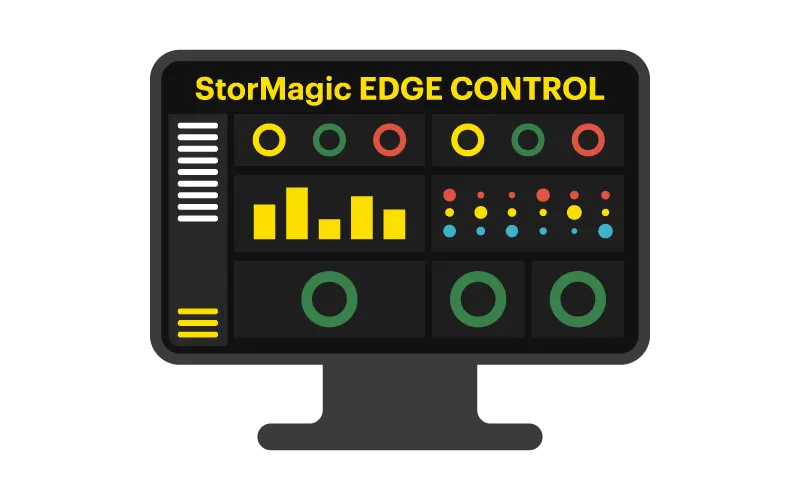Organizations around the world are becoming more reliant on technology for everyday operations, and the demand for IT resources continues to grow exponentially. Many of today’s IT managers are faced with the challenge of implementing solutions that reduce their organization’s carbon footprints, without sacrificing performance or productivity.
In this blog, we share several tips on how businesses can hit their “green IT” goals (i.e. reduce the amount of power, cooling, and physical infrastructure needed to run their infrastructure), while ensuring high availability to critical applications and data.
What is a Carbon Footprint?
A ‘carbon footprint’ is the total amount of carbon dioxide (CO2) and other greenhouse gases, emitted over the full lifecycle of a product. It is expressed as grams of CO2 equivalent per kilowatt-hour of generation (gCO2e/kWh) or tonnes of CO2 equivalent (tCO2e).
Organizations looking to calculate their carbon footprint need to track emissions from two sources:
- Organizational – Emissions from all the activities across an organization, including buildings’ energy use, processes and company vehicles.
- Product – The total emissions over the whole life of a product, from the extraction of raw materials and the manufacturing process, through to the products use, reuse, and finally recycling or disposal.
To combat rising utility costs and increasing power demands, and ultimately reduce their overall carbon footprint, organizations are actively implementing green IT initiatives.
What is Green IT?
Green IT refers to initiatives that use technology in a more environmentally friendly and efficient way, with the aim to reduce the carbon footprint generated by IT systems.
Typically, within the IT department of a business, the green initiatives revolve around reducing the amount of power consumed, which also includes the power used to cool the equipment. The most common actions taken to reduce the power and cooling requirements are:
- Reduce the number of infrastructure components
- Use power-efficient hardware
The challenge in either of these approaches is to successfully take action in a cost effective way, without negatively impacting performance or productivity.
Reducing the Number of Infrastructure Components
Reducing the amount of infrastructure components can be achieved through platform consolidation, multi-tenancy or virtualization (doing more with less), or by designing and deploying solutions that require fewer components from the outset.
Server and storage virtualization enables multiple applications or workloads to share the same physical hardware. This allows surplus servers and storage to be decommissioned, freeing up power and rack space, and also increases the server and storage utilization.
However, left unchecked, virtualization and consolidation could have a detrimental effect on the applications’ performance, as they now have to contend for shared resources (CPU, memory, disk IOPS, and bandwidth). In this situation, the normal course of action would be to deploy bigger, more power hungry and expensive servers to provide the CPU/memory or storage capacity required by the multiple cohabiting applications.
If the bottleneck is with the disk performance, traditionally more disk drives are installed into the servers or storage arrays to provide the required I/O performance. An alternative solution would be to install solid-state disks (SSDs) to meet the required performance. However, SSDs have lower capacities and cost more than hard disk drives. Both of these solutions erode the original cost and space savings that consolidation and virtualization intend to deliver.
Use Power-Efficient Hardware
Deploying power-efficient IT infrastructure components will reduce power and cooling requirements. This can be achieved by:
- Using servers with more efficient power supplies which comply with the US Environmental Protection Agency (EPA) ENERGY STAR for Computer Servers program
- Providing adequate airflow through the use of blanking plates on the equipment racks and improving cooling efficiency
- Using equipment with wider environmental operating envelopes, making fresh air cooling a viable alternative to air conditioning, reducing the power required to cool the equipment
However, these measures may only be possible when the servers are refreshed, which typically occurs when they reach EOL or there is a project to replace them. IT infrastructure generally has a lifespan of 3 to 5 years, but for remote locations this can easily extend beyond 7+ years.
As with all purchases, organizations need to justify the investment in newer IT equipment. New equipment may save on power and cooling costs, as they are more energy efficient. However, in some cases the cost to renew may be significantly more than the operational costs of keeping the old equipment up and running, despite it being less efficient.
How SvSAN Helps Organizations with Green IT initiatives
- Reduce energy usage with software-defined storage: Because it is a software solution, StorMagic SvSAN doesn’t create any additional power or cooling demands, above the ones required for the servers that already exist onsite for the business applications. StorMagic SvSAN is installed as a virtual storage appliance and runs on any x86 server currently supported by either VMware vSphere,Microsoft Hyper-V or Linux KVM hypervisors.
- Reduce waste by using existing servers: Organizations can use any power-efficient server of their choice or reuse/repurpose existing equipment. They can prolong the useful life of the equipment, reducing the number of servers going to landfill.
- Minimize server and storage footprint: SvSAN minimizes hardware footprint because it turns internal server storage into highly available shared storage, using a minimum of two servers onsite. The ability to create a pool of storage that can be shared by physical and virtual servers eliminates the need for a SAN or external storage arrays, which tend to be power hungry. Most competitive solutions on the market require 3 or more servers as a minimum.
- Reduce resource requirements: SvSAN minimizes server resource requirements, only requiring a single processor and 1GB of memory to deliver storage services, and leaving all other server resources dedicated to business applications. This enables customers and partners to scale the StorMagic solution to the business’s exact requirements, using smaller servers with fewer power requirements versus overprovisioning hardware.
- Leverage power-efficient storage: SvSAN can use any storage that it has been allocated. This includes power-efficient storage technologies, such as low power, high capacity hard disks and high performance solid-state disks or flash drives. The flexibility to use any storage technology enables companies to balance capacity, performance, and power needs.
- Reduce carbon footprint tied to travel: Because SvSAN can be deployed, configured, upgraded and supported from a central management location, organizations with extensive remote office networks can forgo site visits, reducing the fuel consumed to travel to site, along with the travel related CO2 emissions.
Interested in learning more about StorMagic SvSAN? Visit our website for additional details about this unique product and how it can provide your organization with lightweight, cost-effective high availability. You can also reach out to our Sales team at [email protected] with any questions or to request more info.




